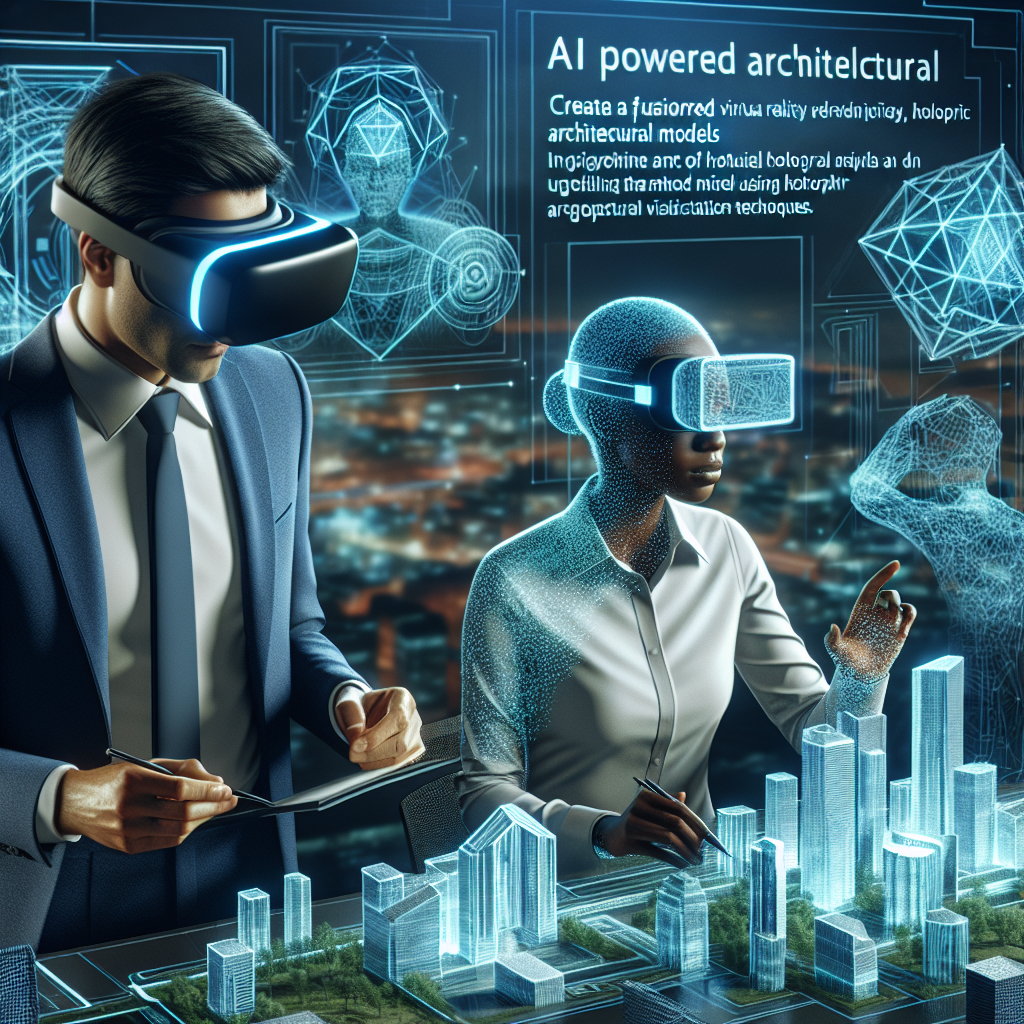The Impact of AI on Architectural Visualization Techniques
In recent years, artificial intelligence (AI) has been revolutionizing many industries, and architecture is no exception. AI is transforming the way architects conceptualize, design, and present their projects. One of the most significant impacts of AI on architecture is in the field of architectural visualization techniques.
Architectural visualization is the process of creating realistic images or animations of architectural designs. It allows architects to communicate their ideas to clients, stakeholders, and the public in a visually appealing and easily understandable way. Traditionally, architectural visualization techniques involved a combination of manual drafting, physical models, and computer-generated graphics. However, with the advancement of AI technology, architects now have access to a wide range of tools and techniques that can significantly enhance the quality and efficiency of their visualization process.
One of the key ways in which AI is transforming architectural visualization is through the use of generative design. Generative design is a process in which AI algorithms are used to explore multiple design options based on a set of parameters and constraints. These algorithms can quickly generate and evaluate thousands of design variations, allowing architects to explore a much wider range of possibilities than would be possible through manual processes alone. This not only speeds up the design process but also leads to more innovative and optimized solutions.
Another way in which AI is impacting architectural visualization is through the use of machine learning algorithms. Machine learning algorithms can analyze vast amounts of data, such as building materials, environmental conditions, and user preferences, to generate more accurate and realistic visualizations. For example, AI algorithms can simulate how natural light will interact with a building’s design, or how different materials will age over time. This allows architects to make more informed design decisions and create more realistic visualizations of their projects.
AI is also revolutionizing the way architects present their designs to clients and stakeholders. Virtual reality (VR) and augmented reality (AR) technologies are increasingly being used in architectural visualization to create immersive and interactive experiences. AI algorithms can optimize these experiences by automatically adjusting lighting, textures, and other visual elements in real-time to create a more realistic and engaging virtual environment. This allows clients to experience a building design before it is built, helping them to better understand and appreciate the architect’s vision.
FAQs:
Q: How does AI improve the efficiency of architectural visualization?
A: AI algorithms can quickly generate and evaluate thousands of design variations, saving architects time and allowing them to explore a wider range of possibilities. Machine learning algorithms can also analyze vast amounts of data to generate more accurate and realistic visualizations.
Q: Can AI help architects make more informed design decisions?
A: Yes, AI algorithms can analyze building materials, environmental conditions, and user preferences to help architects make more informed design decisions. For example, AI algorithms can simulate how natural light will interact with a building’s design or how different materials will age over time.
Q: How does AI impact the presentation of architectural designs to clients?
A: AI technologies such as VR and AR are increasingly being used in architectural visualization to create immersive and interactive experiences. AI algorithms can optimize these experiences by adjusting visual elements in real-time to create a more realistic and engaging virtual environment.
In conclusion, AI is transforming the field of architectural visualization techniques in many ways. From generative design to machine learning algorithms, AI is helping architects create more innovative, efficient, and realistic visualizations of their projects. As AI technology continues to advance, we can expect to see even more exciting developments in the field of architectural visualization in the years to come.

